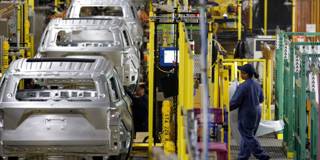At a time when businesses are awash in technologies capable of replacing human labor, the US tax code is encouraging them to embrace excessive levels of automation – even to the point where it is no longer efficient to do so. Rarely before has the deck been stacked so fully against workers.
CAMBRIDGE – The first months of US President Joe Biden’s administration will be defined by the efforts to contain COVID-19 and deliver vaccinations on a mass scale. Over the medium term, however, the economy will determine the administration’s success. Here, Biden has indicated that tax reform will be a high priority, and he has released plans to address long-running fiscal problems such as federal government revenue shortfalls and the tax system’s loss of progressivity. But these proposals do not yet go far enough to address a major fault line in the tax code: the excessively favorable treatment of capital income (profits and returns on financial assets and savings).

CAMBRIDGE – The first months of US President Joe Biden’s administration will be defined by the efforts to contain COVID-19 and deliver vaccinations on a mass scale. Over the medium term, however, the economy will determine the administration’s success. Here, Biden has indicated that tax reform will be a high priority, and he has released plans to address long-running fiscal problems such as federal government revenue shortfalls and the tax system’s loss of progressivity. But these proposals do not yet go far enough to address a major fault line in the tax code: the excessively favorable treatment of capital income (profits and returns on financial assets and savings).